
| Specifications |
| Publisher: Abhinav Publication | |
| Author: K. R. Srinivasan | |
| Language: English | |
| Pages: 112 (61 B/W Plates) | |
| Cover: Hardcover | |
| 9.7" X 7.1" | |
| Weight 460 gm | |
| Edition: 1975 | |
| IDJ973 |
| Delivery and Return Policies |
| Ships in 1-3 days | |
| Returns and Exchanges accepted within 7 days | |
| Free Delivery |
From the Jacket
This publication for the first time is a full account of the Dharmaraja Ratha, the largest and most versatile of the famous monolithic Vimanas of Pallava origin in Mahabalipuram. With its full descriptive text and illustrations of all the sculptures, most of them hitherto unpublished, and including all the architectural views, too, it is a complete and fully illustrated treatise on the monument from the points of view of technique, architecture, sculpture, iconography, epigraphy and chronology. It is the outcome of the patient and critical study of a scholar with many years service and experience in the Archaeological Survey of India, particularly in the architectural and iconographic survey of temples, which made him the organizer and the first officer in charge of the Temple Survey Project (South). As a close and integrated study of a typical Pallava monument and with its ample photographic illustrations the book in opening up new vistas altogether is expected to stimulate interest and further research in the field of Indian architecture and sculpture, particularly south Indian.
The author, K. R. Srinivasan (b. 1910) after taking his M. A. degree and further training in Museology and Archaeology worked in an Indian State for 11 years as Curator and Archaeologist and then in different parts of India for 23 years as an officer of the Archaeological Survey of India. In that service he rose to the position of Deputy Director General before his actual retirement. In 1969. Versed in different branches of archaeological work in India, he specialized in the architectural and iconographic study of Indian temples, particularly those found south of the Vindhyas as also in the methods of their conservation. As such he was deputed, in 1949, to visit and study the monuments of Indonesia and, later, was appointed to organize a new special branch in the Archaeological Survey of India for the conduct of a combined architectural and iconographic survey of the temples, his assignment being the Southern region as against that of another officer appointed for the Northern region. As a result he published his first monograph, in that capacity, entitled 'The Cave Temples of the Pallavas'. His other monographs in the series await publication by the Survey. He is also the author of 'Temples of South India' published recently by the National Book Trust, India. He has to his credit many contributions towel-known publications on these and other aspects of Indian Archaeology and Art. He was till recently the President of the Archaeological Society of South India, and has been associated with many learned bodies and the Universities in the south having Faculties in Archaeology, Indology and allied disciplines.
Preface
If the norms of Pallava architecture and forms of Pallava sculpture in their diverse iconography, of the period between A.D. 630 and 700, could all be said to have been displayed and concentrated in one monumental creation, it is in the three-storeyed monolithic Vimana popularly known as the Dharmaraja Ratha in Mahabalipuram. It is the greatest in magnitude and content among the nine coeval 'Rathas' that are all, peculiarly enough, confined to Mahabalipuram, standing out as essays in the translation into living rock of the contemporary types of Vimana forms hitherto and traditionally constructed of brick, timber and stucco. In their faithful reproduction of all the features and details of their contemporary originals composed of such perishable fabric these permanent monolithic 'cut-out' replicas are examples of full-scale 'architectural sculpture' rather than real 'architecture'. But they stand as examples of the sole surviving links at the head of an unbroken chain of hundreds of stone-built Vimanas that form an evolving series extending in their sequence through the centuries from the Pallava time to the present day. By the very novelty of their creation, too, these monoliths have induced similar modes of architectural sculpture in many other far-off loci in India, between the 8th and 9th centuries A.D. As such, the relative technique involved becomes an equally interesting aspect of study.
Indicating as they individually and collectively do the earliest forms and mode of architecture approximating to the beginnings of the Vimana form and structure in the Sough, the importance of a close architectural study, in the light of indigenous Silpa canons and tradition, of this Ratha, which happens to be the largest and most developed among the lot, by itself and in comparison with its compeers, needs no stress. This would be more so since this is the only one among the Rathas, that contains inscriptions-38 short ones in all including the latest, that are of considerable interest to the epigraphist and historian, their palaeography and subject matter helping in the dating.
Replete with sculpture, again, to an extent that no other Ratha is, that are at once divine, human and animal in nature and are judiciously disposed on all its three tiers, this Ratha, in addition, forms a veritable gallery of Pallava sculpture and iconography of the times. Those on the two upper talas do not come into full view of the observer from ground level and are also difficult to be photographed in complete form without distortion, because of the too closely set hara parapets round the tala harmyas and the very narrow ambulatories in between. This has stood in the way of earlier writers describing them fully or illustrating them all in full with photographic reproductions. Other accounts published so far deal with one or other aspect of the monument or are of a generalized nature. Successful photography in full form of all the 50 and odd sculptures facilitated not only their individual description but also a comparative study with the other known sculptures of the Pallavas and their contemporaries.
Having at last overcome the difficulties of photographing the sculptures for satisfactory reproduction in print, the need for the publication of an integrated study of this unique monument with all the sculptures illustrated therein was felt. The present book is the result of such an urge and brings in one compass a critical and descriptive study of all the aspects-namely, the place of this monolithic Vimana among others in the scheme of South Indian Vimana forms, the method and technology of its production, the probable phases of work and their sequence and the time factor involved, the architectural features, the plan, rise and components thereof, the sculptures, their description-both absolute and comparative, their style, iconography, and significance of the poses, mudras and bhavas exhibited by them, the inscriptions and their discussion and conclusions regarding chronology. While the text covers all the above aspects in its chapters, the illustrations include for the very first time all sculptures in toto, besides those relating to the architectural features of the Vimana and other examples that demonstrate the method of 'cutting out' such a Vimana form from the rock. In its aim to cover everything about the Vimana by way of description and illustration the publication is expected to be of considerable use to the informed reader and discerning scholar alike.
The author is grateful to the Archaeological Survey of India for permission to use their photographs and to the publishers-M/s Abhinav Publications, New Delhi for bringing out this book in such excellent form. And finally he takes this opportunity to dedicate this work to the memory of his revered elder brother the late K. R. Venkataraman, who at the beginning of the author's career initiated him into the study of Indian history, art, culture and tradition and was all along evincing a keen interest in the present publication.
| Preface | v | |
| Chapter | ||
| I | Introduction-The Rathas of Mahabalipuram | 1 |
| II | The Architectural Aspect of The Dharmaraja Ratha | 7 |
| III | The Sculptures And Their Iconography | 21 |
| IV | The Architectural Milieu And Ethos | 39 |
| V | The Sculptural Style And Idiom | 55 |
| VI | The Inscriptions And Chronology | 85 |
| Bibliography | 99 | |
| Illustrations | 101 | |
| Index | 105 |
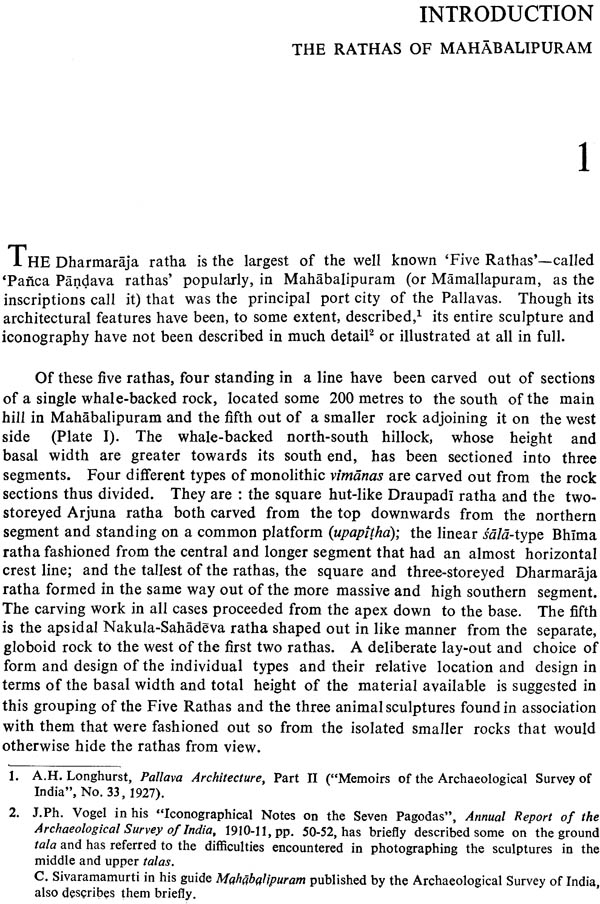
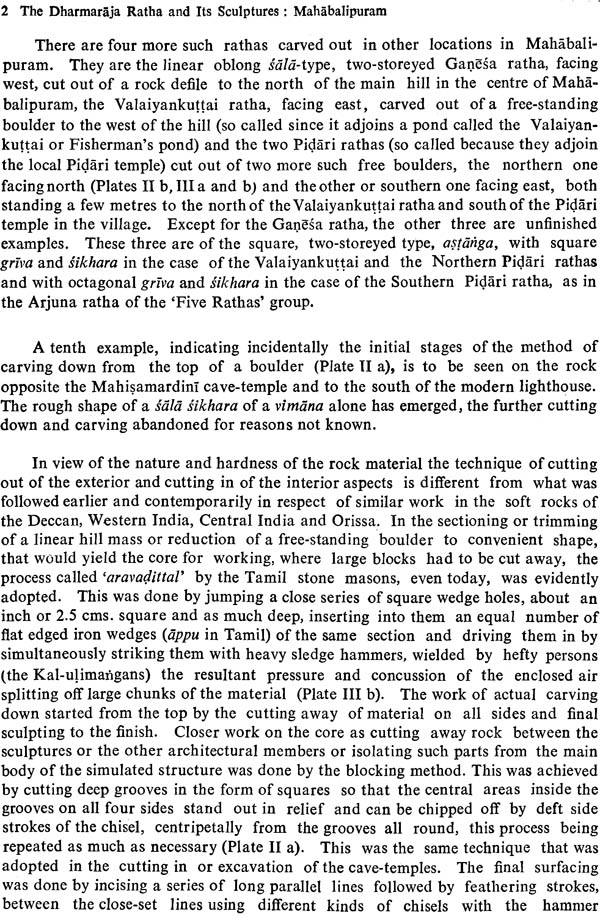
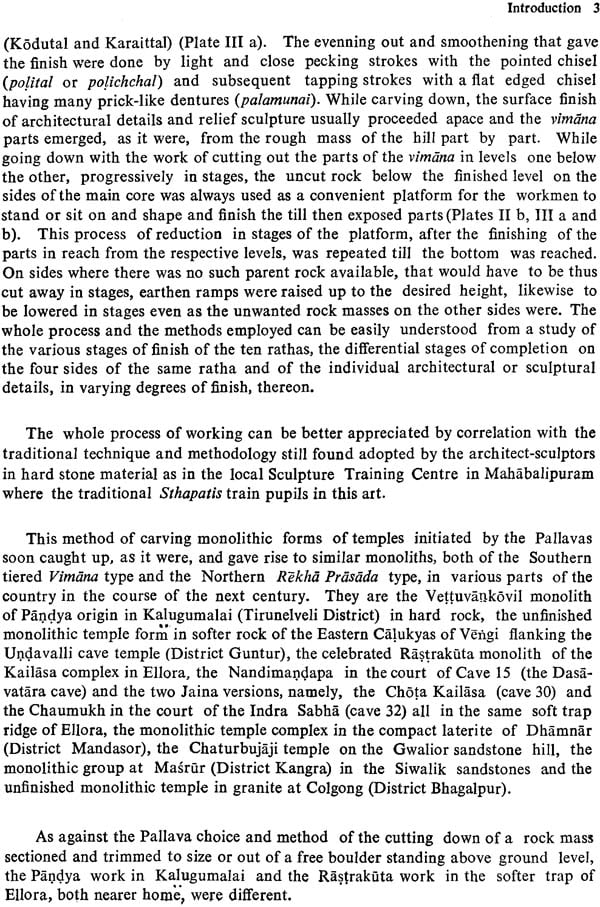

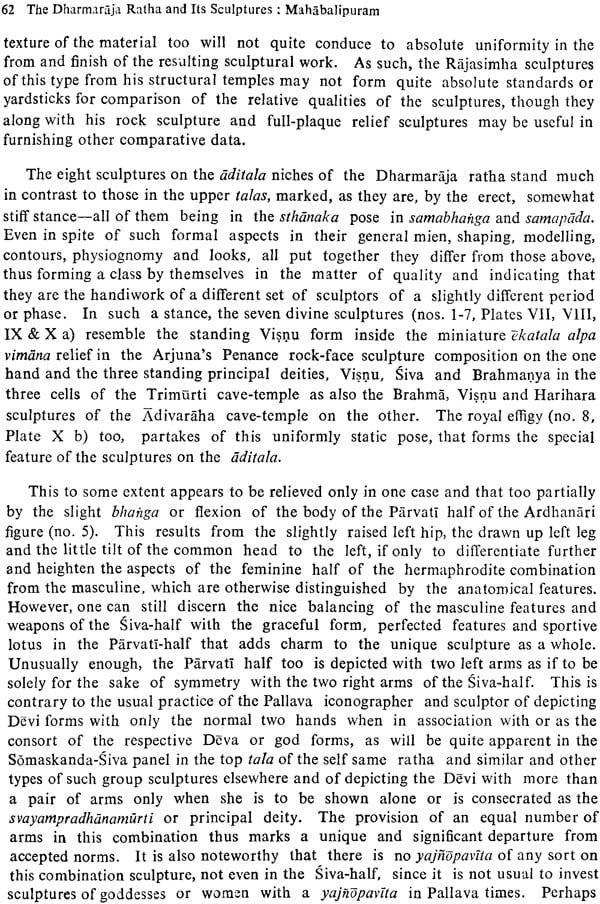
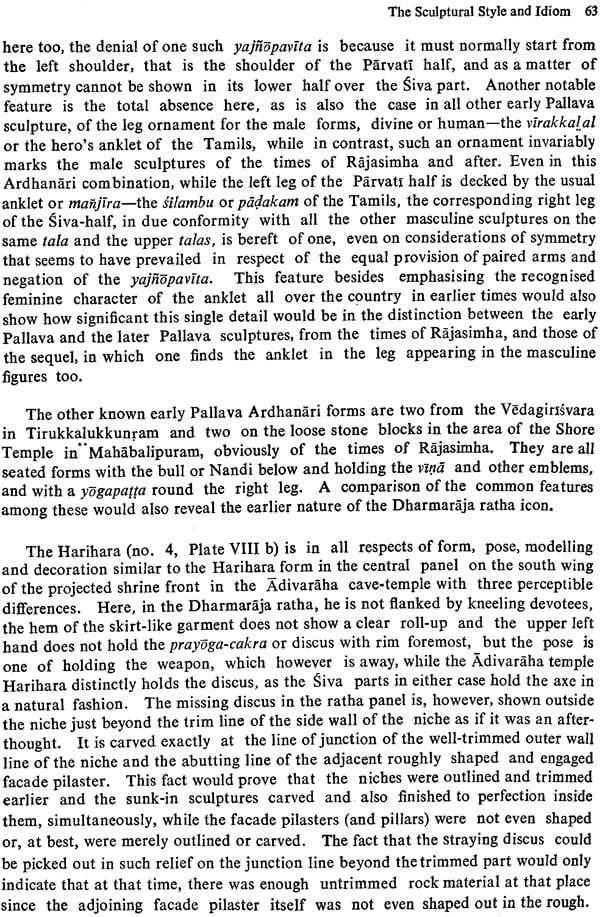
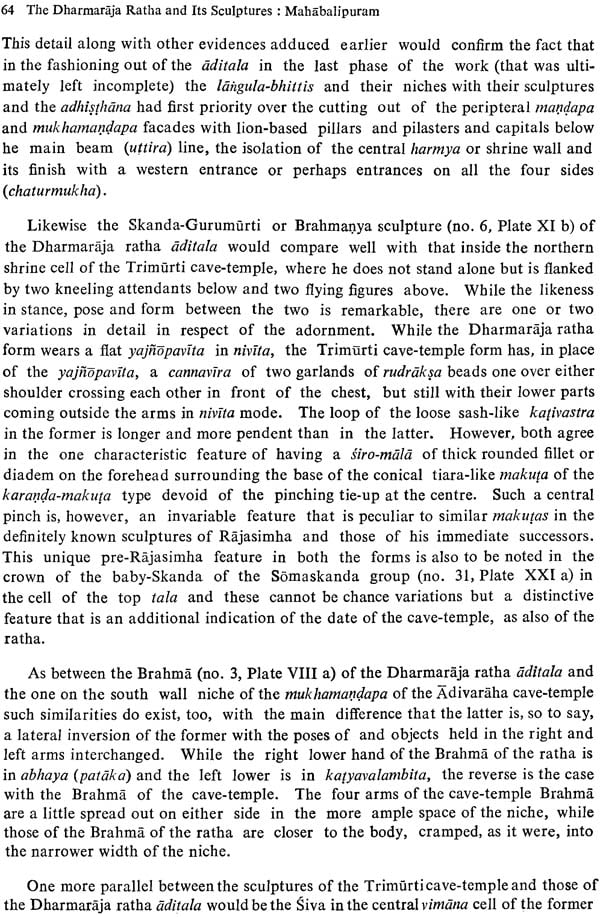

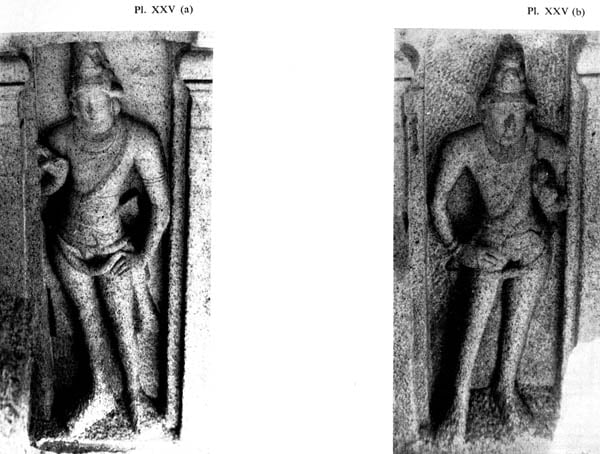
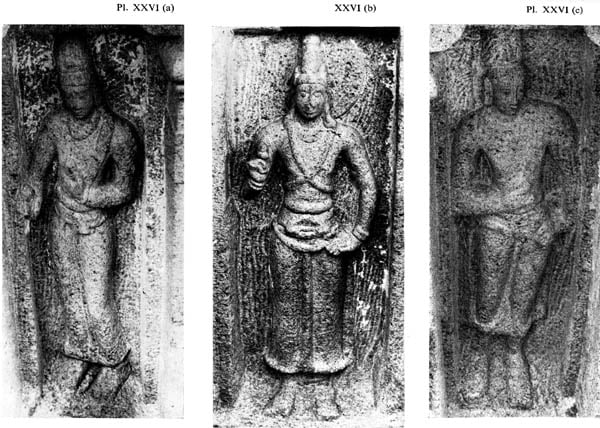
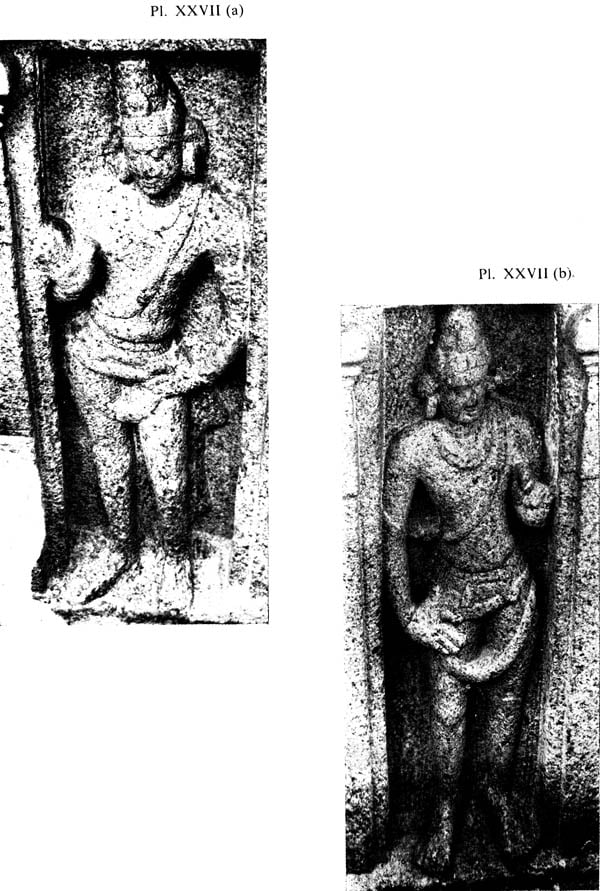

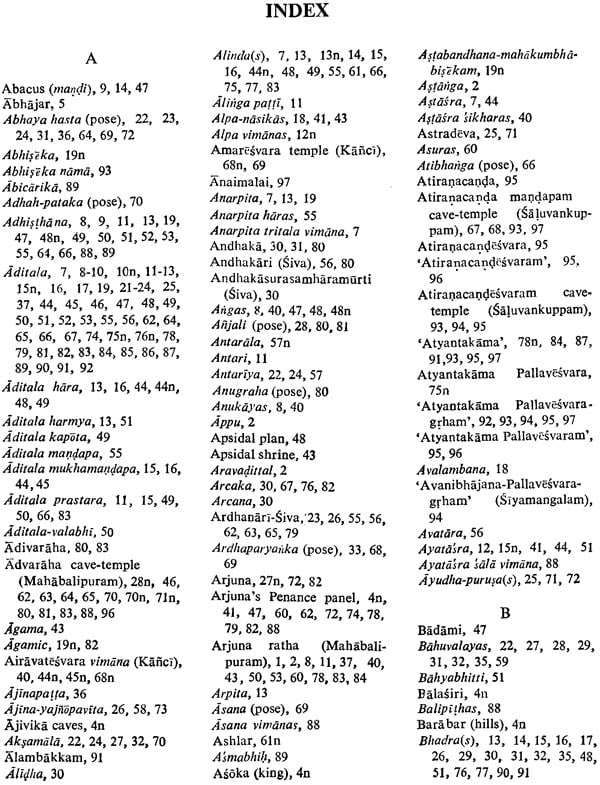
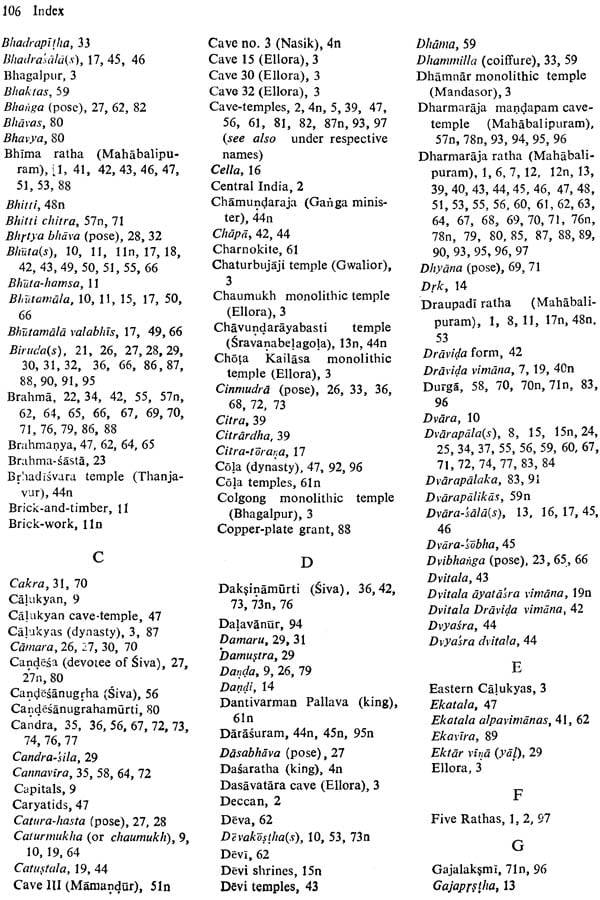
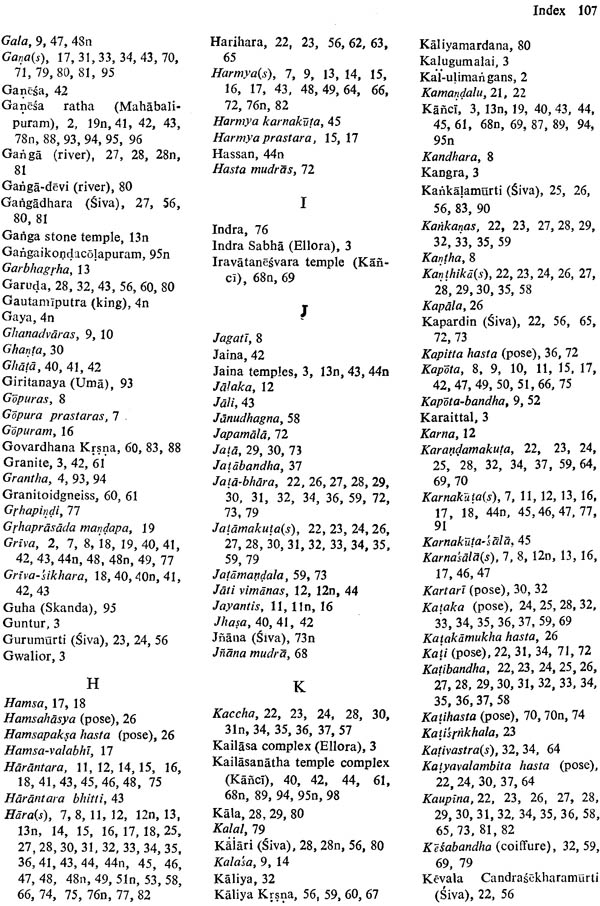
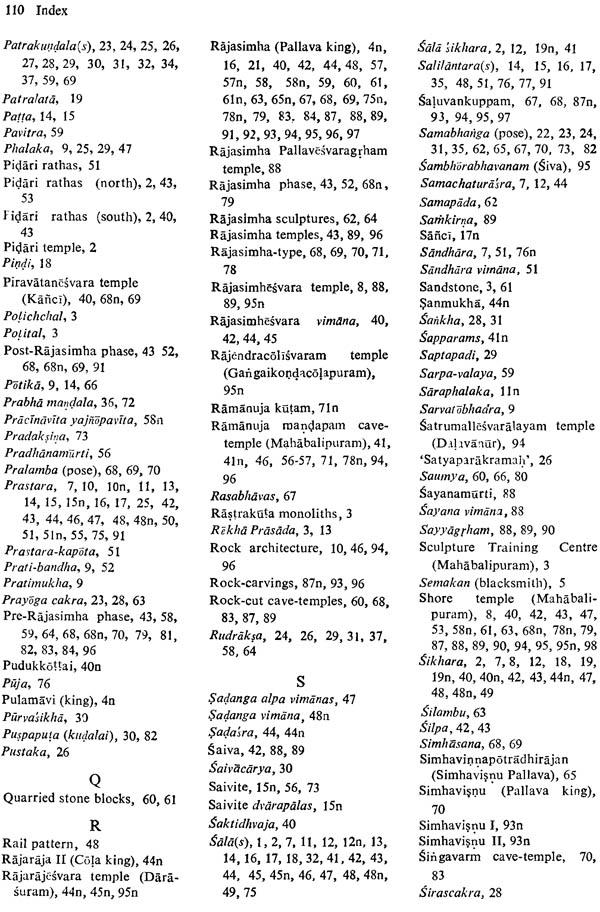
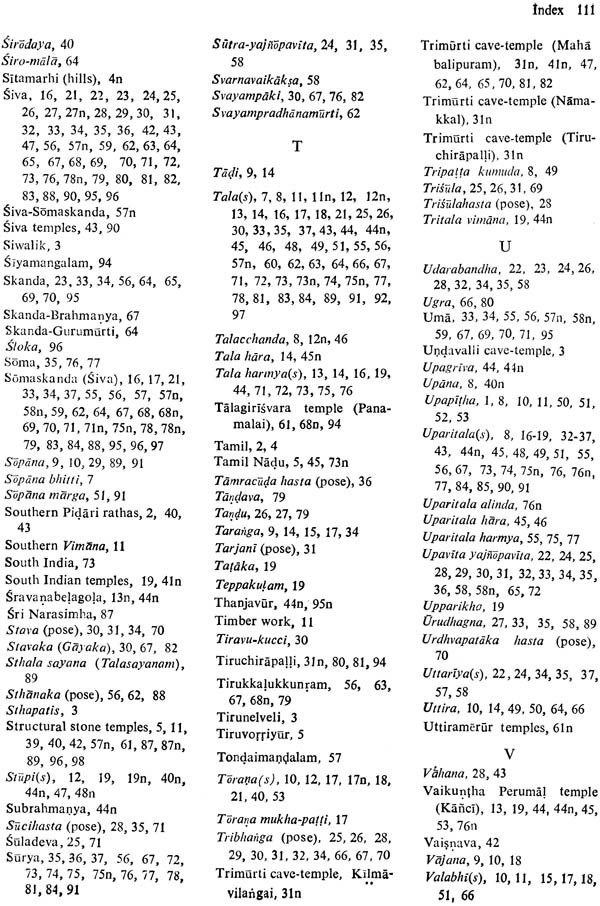

Send as free online greeting card
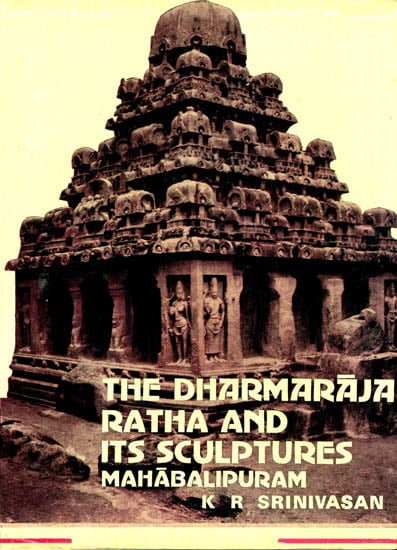
Visual Search